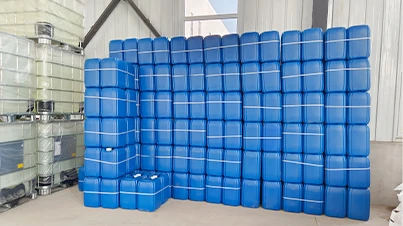Synthesis and Applications of Cross-Linked Polyacrylamide in Advanced Materials
Cross-Linked Polyacrylamide Properties, Applications, and Innovations
Cross-linked polyacrylamide (PAM) is a versatile synthetic polymer that has gained significant attention in both research and industrial applications due to its unique properties and functionalities. This polymer is formed through the polymerization of acrylamide monomers, where the cross-linking process introduces robustness and enhances structural integrity, making it suitable for a wide range of applications.
Properties of Cross-Linked Polyacrylamide
One of the defining characteristics of cross-linked polyacrylamide is its network structure, which contributes to its excellent mechanical strength and stability. The cross-linking process involves creating covalent bonds between individual polymer chains, resulting in a three-dimensional network that can retain water and other substances. This hydrophilic nature allows cross-linked PAM to absorb significant amounts of water, making it an effective superabsorbent material. Additionally, the degree of cross-linking can be adjusted to tailor the physical properties of the polymer, such as its swelling behavior, viscoelasticity, and solubility.
Another notable property of cross-linked PAM is its biocompatibility, which has made it suitable for biomedical applications. The capability to form hydrogels enhances its use in drug delivery systems, tissue engineering, and wound dressings. The hydrophilic environment provided by cross-linked PAM allows for the controlled release of therapeutic agents, promoting localized treatment with reduced systemic side effects.
Applications of Cross-Linked Polyacrylamide
Cross-linked polyacrylamide finds extensive use across various fields, including agriculture, water treatment, and biomedical engineering. In agriculture, it is employed as a soil conditioner to improve water retention and reduce erosion. When applied to sandy soils, cross-linked PAM can significantly enhance the soil’s ability to retain moisture, thereby promoting healthier crop growth in arid regions.
cross linked polyacrylamide

In the water treatment industry, cross-linked PAM is utilized as a flocculant, aiding in the removal of suspended solids from wastewater. The polymer’s ability to bind with particles facilitates the aggregation and sedimentation of impurities, leading to cleaner water. Its application in this field not only improves water quality but also contributes to environmental sustainability by reducing the discharge of harmful pollutants.
Moreover, the biomedical sector has leveraged the properties of cross-linked polyacrylamide in various innovative applications. As mentioned earlier, its use in drug delivery systems allows for the encapsulation of drugs within the polymer matrix, ensuring a sustained release over time. In tissue engineering, cross-linked PAM hydrogels can serve as scaffolds that mimic the extracellular matrix, supporting cell growth and tissue regeneration. This application shows great promise in regenerative medicine and wound healing.
Innovations and Future Directions
Ongoing research continues to expand the potential applications of cross-linked polyacrylamide. Innovations in modifying its chemical structure and cross-linking techniques open new avenues for enhanced functionalities, such as stimuli-responsive behavior, where the polymer’s properties can change in response to environmental cues like pH or temperature. This feature could lead to advanced applications in targeted drug delivery and biosensing technologies.
Additionally, the integration of cross-linked PAM with nanomaterials is an area of keen interest, as it may enhance the mechanical properties and expand the range of functionalities. Such composites could lead to smarter hydrogels capable of responding to multiple stimuli, offering exciting possibilities in various fields.
In conclusion, cross-linked polyacrylamide is a remarkable polymer that combines advantageous properties with diverse applications. Its ability to retain moisture and facilitate biological interactions makes it invaluable in agriculture, water treatment, and biomedicine. As research advances, we can anticipate even more innovative applications that harness the unique capabilities of this versatile material, paving the way for sustainable solutions and cutting-edge technologies.
-
Pbtc Scale InhibitorPBTC: A Scale Protector for Industrial Water TreatmentNewsAug.05,2025
-
Organic Phosphonate: An Efficient Defender in the Field of Scale InhibitionNewsAug.05,2025
-
Hydrolyzed Polymaleic Anhydride: Green Pioneer in Scale Inhibition FieldNewsAug.05,2025
-
PAPEMP Polyamino Polyether Methylene Phosphonic Acid For SaleNewsAug.05,2025
-
Flocculant Water Treatment: A Pioneer in Purification in the Field of Water TreatmentNewsAug.05,2025
-
Benzyl Isothiazolinone: An Efficient and Broad-Spectrum Antibacterial Protective GuardNewsAug.05,2025





